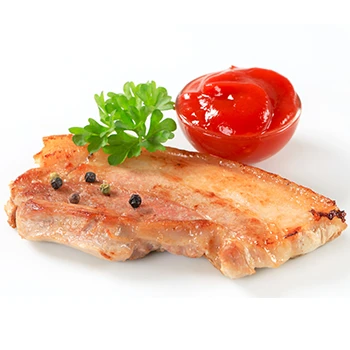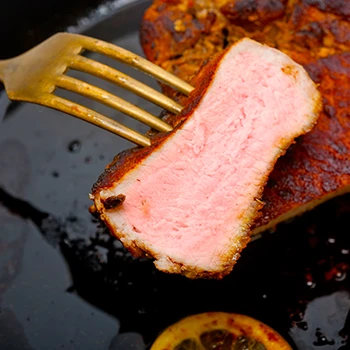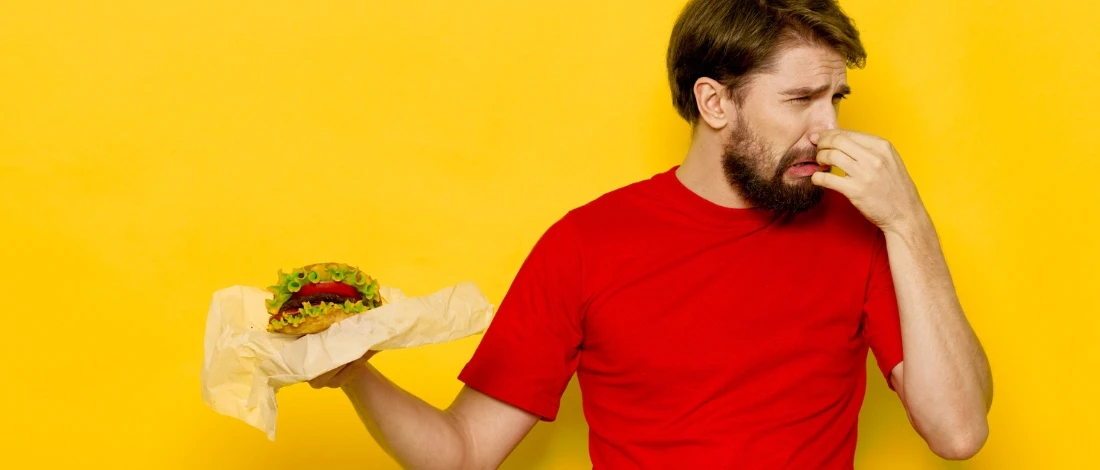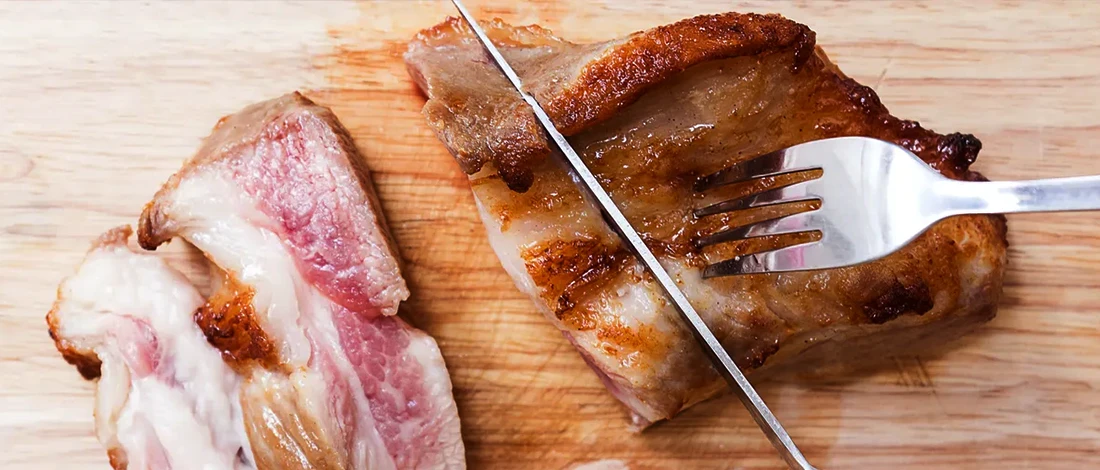One of the juiciest myths in meat-eating circles is that pink pork is a red flag—undercooked and off-limits. But let's not throw the baby back ribs out with the bathwater; there are times when that rosy hue doesn't spell danger but rather, deliciousness.
As a die-hard carnivore for a decade and counting, red meat is my bread and butter—or rather, my steak and ribs. Curious and hungry for truth, I plunged into the depths of online research and chewed the fat with a culinary expert to set the record straight.
So, get your forks and knives ready, because here's everything you need to know about savoring pink pork.
Quick Summary
- Pink pork is safe to eat when the internal temperature reaches 145 degrees Fahrenheit, despite common misconceptions associating pink color with undercooked meat.
- The fear of pink pork stems from the risk of trichinosis, a disease caused by parasites in this type of meat, but modern farming practices have significantly reduced this risk.
- The safest way to cook this type of meat is to use a meat thermometer to check the internal temperature, with different cuts requiring different cooking temperatures and times.
Is Pink Pork Safe?

Yes, pink pork is safe. Most people think that meat is pink because it’s undercooked, but it can also be pink for other reasons.
The most important thing when choosing pork is getting high-quality pork from established and trustworthy meat sellers. We’ve rounded up 11 best online places to buy meat. These services only sell high-quality meat.
There are chemical reactions between amino acids in the proteins in meat. These chemical differences can make different meat cuts come out pinker even if you cook them for the prescribed amount of time.
For example, nitrates are chemicals used as additives to enhance the food color. The reaction between nitrates and protein stops the oxygen from releasing, and the pink color remains, although the pork roast is cooked.
Pork can be pink because of the specific cut you have. For example, the belly section is leaner than the loin. It has more myoglobin, so there’s a higher chance it’ll stay pink.
Finally, your pork could be pink because of the cooking method. Grilling and searing the meat at a high temperature can make the proteins denature quickly. They don’t have the time to change color, which results in pink meat.
None of these mean you’re eating undercooked meat, so it is safe to eat.
Overall, color is an unreliable indicator of the doneness of cooked pork.
It’s always best to check the internal temperature to know if your meat is done. This way, you don’t have to consume undercooked pork.
Post You May Like: Does Pork Cause Gout?
Why Do People Fear Pink Pork?

People fear pink pork because they think it has trichinosis. Trichinosis is a disease caused by eating pork because the meat has infected parasites.
Trichinosis was a common condition in domesticated swine in the US, and people were advised by the USDA to cook the pork until it reached 160 degrees.
This led to people assuming pork needs to be gray or brown and extremely well-cooked, to kill the infected parasites.
However, advances in modern farming practices resulted in very low trichinosis cases. Nowadays, there are higher chances of getting trichinosis from eating undercooked game meats than cooked pork.
The Safest Way to Cook Pork

The safest way of cooking pork is to use a meat thermometer to check the internal temperature.
In 2011, the USDA lowered the safe cooking temperature to 145 degrees and a three-minute rest time [1].
After the rest time, your chops and tenderloin should be pale white with a hint of pink. The pink doesn’t indicate the meat is unhealthy. It’s safe for consumption as long as its temperature is 145 degrees.
“Cook pork, roasts, and chops to 145 ºF as measured with a food thermometer before removing meat from the heat source, with a three-minute rest time before carving or consuming. This will result in a product that is both safe and at its best quality—juicy and tender.”
- USDA
Note: If you feel uneasy eating slightly pink pork, you can continue cooking it until it reaches 155 degrees. However, this pork roast won’t be as juicy.
Also, if you’re cooking ground pork, you should cook it until it reaches 165 degrees [2].
Grinding meat introduces air with potential bacteria into the meat, so it’s best to cook ground meat at a higher temperature than regular meat.
Here’s how to know each cut of pork is safe to eat:
- Pork loin — Cook it for 20 minutes until it reaches 145 degrees. It’s done even if there’s pink in the middle.
- Pork chop — Cook until the middle pork reaches 145 degrees. You’ll have flavorful meat if the outside is white and the inside slightly pink.
- Pork ribs — This pork is cooked when it turns white, and you can easily pull the meat off the bone. Sometimes ribs cooked at 145 degrees can be tough and chewy, so you can cook them until the meat temperatures reach 180 degrees.
- Pork butt — Is very thick and should be cooked until the temperature reaches 200 degrees.
Related Article: Best Tips for Cooking Pulled Pork
FAQs
Is It OK if the Pork is a Little Pink?
Yes, it’s OK if the pork is a little pink. This happens for several reasons, and pork chop is safe to eat if the internal temperature of the meat is 145 degrees.
How Do You Know if Pork is Undercooked?
You know the pork is undercooked if the juices that come from it aren’t clear or pink. Use a fork to poke a hole in the pork chops, and check if it's tender and what color the juices are.
How Pink is Too Pink for Pork?
If the pork is very pink, more than slightly pink in the center, it’s too pink for pork. Pork should be cooked medium rare and only slightly pink in the middle.
References:
- https://www.usda.gov/media/blog/2011/05/25/
- https://www.fda.gov/food/people-risk-foodborne-illness/meat









I used to be so scared of undercooking pork, but now I know a little pink is actually okay.